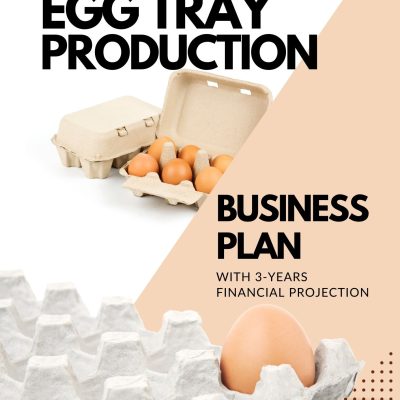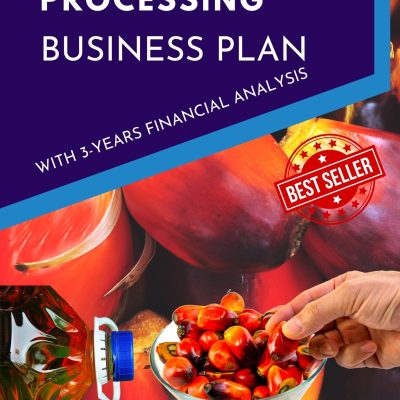In 2023, the revenue in the Bottled Water market in Nigeria amounted to US$5.0bn. It is projected to experience an annual growth rate of 11.17% from 2023 to 2027 (CAGR 2023-2027).
When compared globally, in the United States generates the highest revenue in this segment, reaching US$94bn in 2023.
In terms of per capita revenue, each person in Nigeria is expected to generate US$22.29 in 2023. By 2027, out-of-home consumption, such as in bars and restaurants, is anticipated to account for 1% of spending and 1% of volume consumption in the Bottled Water market.
The volume in this segment is projected to reach 6.1bn L units by 2027. Additionally, a volume growth of 0.3% is expected in 2024. The average volume per person in the Bottled Water market in Nigeria is forecasted to be 27.50L units in 2023.
Nigeria’s bottled water market is booming, driven by increasing urbanization, a growing middle class, and concerns over water quality and safety.
Plan is to produce 1,000 bottles per hr and increase to 3,ooo bottles per hr over 3 years.
Both Word and PDF file included.
Contents
1. EXECUTIVE SUMMARY ……………………………………………………………………….. 6
Financial Summary ……………………………………………………………………………….. 6
Start-up Expenses ……………………………………………………………………………… 7
Start-up Expenses Year 1 (Starting Balance Sheet) ………………………………… 7
Sources of Funding ……………………………………………………………………………. 8
2. INTRODUCTION ………………………………………………………………………………….. 9
Project Overview …………………………………………………………………………………… 9
Objectives ……………………………………………………………………………………………. 9
Location Analysis – Sagamu, Ogun State ………………………………………………… 10
The Factory ………………………………………………………………………………………… 10
3. MARKET ANALYSIS …………………………………………………………………………… 11
Overview ……………………………………………………………………………………………. 11
The Industry ……………………………………………………………………………………….. 11
Market Growth Statistics ………………………………………………………………………. 12
Key Growth Drivers ……………………………………………………………………………… 12
Growing Health Awareness ……………………………………………………………….. 12
Rising Disposable Incomes ……………………………………………………………….. 12
Urbanization ……………………………………………………………………………………. 12
Rising Cost of Energy and Production …………………………………………………. 13
Marketing and Branding…………………………………………………………………….. 13
Product Diversification ………………………………………………………………………. 13
Poor Public Water Supply Infrastructure ………………………………………………. 13
Key Market Segments ………………………………………………………………………….. 13
Premium/Imported Brands …………………………………………………………………. 13
Mid-Range Brands ……………………………………………………………………………. 13
Value Brands …………………………………………………………………………………… 13
Sachet Segment ………………………………………………………………………………. 14
Key Regional Markets ………………………………………………………………………….. 14
Key Players ………………………………………………………………………………………… 14
Major Production Locations …………………………………………………………………… 16
Our Target Market ……………………………………………………………………………….. 16
Competition ………………………………………………………………………………………… 17
Industry Challenges and Opportunities …………………………………………………… 18
Challenges ………………………………………………………………………………………. 18
Opportunities …………………………………………………………………………………… 19
4. Sales and marketing ……………………………………………………………………………. 20
Pricing and Distribution ………………………………………………………………………… 20
Sales Forecast ……………………………………………………………………………………. 20
Sales Forecast Year 1 ………………………………………………………………………. 20
Sales Forecast Year 1-3 ……………………………………………………………………. 21
Marketing Strategy ………………………………………………………………………………. 21
5. technical analysis ………………………………………………………………………………… 22
Water Sourcing …………………………………………………………………………………… 22
Production Capacity …………………………………………………………………………….. 22
Raw materials Requirement ………………………………………………………………….. 22
Machinery and equipment requirement …………………………………………………… 23
Product Packaging ………………………………………………………………………………. 23
Bottle Production Process Flow …………………………………………………………….. 24
Bottling Process Flow …………………………………………………………………………… 25
Production Sections …………………………………………………………………………….. 25
Purification Section …………………………………………………………………………… 25
Bottle Manufacturing Section ……………………………………………………………… 26
Rinsing – Filling and Capping Section ………………………………………………….. 26
Labeling Section ………………………………………………………………………………. 26
Packing Section ……………………………………………………………………………….. 27
Quality Control Section ……………………………………………………………………… 27
Laboratory ………………………………………………………………………………………. 27
Sampling …………………………………………………………………………………………. 27
6. Manpower and Training Requirements …………………………………………………… 29
Organization Structures ………………………………………………………………………… 29
Human Resource Requirement ……………………………………………………………… 29
7. Financial Analysis ……………………………………………………………………………….. 31
Assumptions……………………………………………………………………………………….. 31
Production Assumptions ……………………………………………………………………. 31
Start-Up Costs …………………………………………………………………………………….. 32
Start-up costs break-down ……………………………………………………………………. 33
Machinery and Equipment …………………………………………………………………. 33
Working Capital ……………………………………………………………………………….. 34
Operating Expenses Years 1-3 ……………………………………………………………… 35
Income Statement Years 1-3…………………………………………………………………. 36
Cash Flow Forecast Years 1-3 ………………………………………………………………. 37
Balance Sheet Years 1-3 ……………………………………………………………………… 38
Breakeven Analysis Year 1 …………………………………………………………………… 39
Financial Ratios …………………………………………………………………………………… 39
8. Appendixes ………………………………………………………………………………………… 40
Facility Layout …………………………………………………………………………………….. 40
Key Equipments ………………………………………………………………………………….. 41



